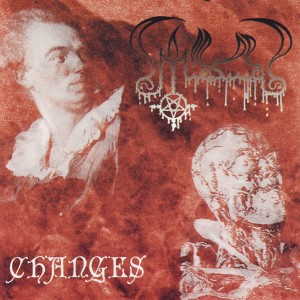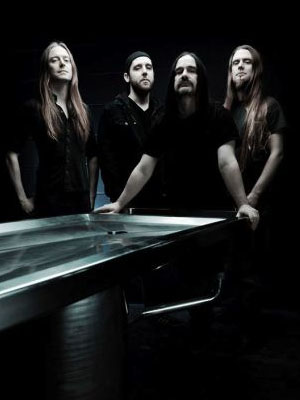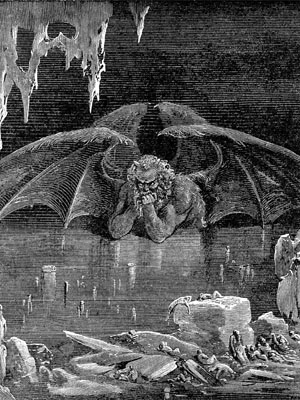Ambient band Khand overlaps the metal community because its member and its history are intertwined with the history of east coast underground metal. In addition, much like Brian Eno, Jaaportit, Robert Fripp, Lord Wind, Neptune Towers, Tangerine Dream and Kraftwerk seem appreciated in some segments of the metal community, hessians appear to enjoy the “metal-like” dark heavy vibe of this ambient band. The following track, “The Squire’s Dream,” is from the upcoming Khand full-length to see the light of day at a time yet unannounced.
2 CommentsManowar – Warriors of the World re-issue
 Most people are ruled by a fear of what other people think. If they don’t end up looking cool to their friend group, they fear they have become invalidated and are worthless. As a result, people have difficulty accepting anything which is not ironic, contrived and vague.
Most people are ruled by a fear of what other people think. If they don’t end up looking cool to their friend group, they fear they have become invalidated and are worthless. As a result, people have difficulty accepting anything which is not ironic, contrived and vague.
(more…)
Tags: Heavy Metal, manowar, power metal
Amon Amarth – Deceiver of the Gods
 Fans of Amon Amarth will find their latest offering Deceiver of the Gods to be a solid continuation of the band’s heavy and bloody recapitulation of Norse mythology, albeit a little less heavy and a little less bloody.
Fans of Amon Amarth will find their latest offering Deceiver of the Gods to be a solid continuation of the band’s heavy and bloody recapitulation of Norse mythology, albeit a little less heavy and a little less bloody.
Those new to the latest album by this 14-year-long line-up of Swedish death metal royalty will find a great introduction to their sound and ethos. While Deceiver of the Gods does not have the intensity of classics With Oden on Our Side or Twilight of the Thunder God, this album certainly offers everything expected of an Amon Amarth album.
The first two tracks, “Deceiver of the Gods” and “As Loke Falls” show a strong Iron Maiden influence. “Father of the Wolf” — for which a video is being produced — is thrashier. “Shape Shifter” is an epic song that proves a bit heavier than the offerings to this point. “Under Siege” steps things up nicely with a fairly intricate opening, a much more complex structure overall, and a couple of extra minutes to develop. At 6:17 it is the second-longest song on the album (and this reviewer’s favorite track) and exemplifies the melodic death metal aesthetic Amon Amarth has so adroitly sustained year after year, album after album. “Blood Eagle,” “We Shall Destroy,” and “Hel” are solid tunes if a bit tiring; “Hel” also features the vocal contributions of Messiah Marcolin, notable for his work with unique doom metal band Candlemass. “Coming of the Tide” drives harder, and the energy it brings — as well as tempo changes and nice guitar work — recall the intensity of earlier albums. The eight-minute epic “Warriors of the North” closes the album with classic Amon Amarth flair.
Those interested in the deluxe edition will find a four-song EP-Under the Influence– included. Each song appears to be a tribute to an influential band. “Burning Anvil of Steel” (Judas Priest), “Satan Rising” (Black Sabbath), “Snake Eyes” (AC/DC), and “Stand Up to Go Down” (Motorhead) constitute an intriguing contemplation of Amon Amarth’s sources.
Expertly produced, mixed, and mastered by veteran metal-maven Andy Sneap (originally of Sabbat UK), Deceiver of the Gods is a good album and well worth the asking price. Fans will appreciate the new material and those new to Amon Amarth and/or death metal will find this album a worthy introduction.
Tracklist:
- Deceiver of the Gods (4:19)
- As Loke Falls (4:38)
- Father of the Wolf (4:19)
- Shape Shifter (4:02)
- Under Siege (6:17)
- Blood Eagle (3:15)
- We Shall Destroy (4:25)
- Hel (4:09)
- Coming of the Tide (4:16)
- Warriors of the North (8:12)
Tags: amon amarth, Melodic Death Metal
A word on protection of speech
 I am an introvert, but I tend to like people. I see in each of you a series of small (and in some cases, large) miracles. Biology and naturalism will always fascinate me, as will the study of the mind, and of reality itself. It is full of wonder.
I am an introvert, but I tend to like people. I see in each of you a series of small (and in some cases, large) miracles. Biology and naturalism will always fascinate me, as will the study of the mind, and of reality itself. It is full of wonder.
That being said… I’m not going to agree with most of you on anything except the really obvious (Mental Funeral is Autopsy’s best album, nu-core is a misstep for metal, and the Cro-Mags trash almost all UK punk except Amebix and Discharge). I’m a realist, an active nihilist, and a perennialist. You will find my view of life either laughably stupid, appallingly Jack Londonism, or not materialistic enough. So it goes.
The point of that rather pretentious detour is that I’m not into the business of trying to stop other people from having their say. There’s only really two limits on that: illegal, or non-contributive. The latter is a field that like all things is a subjective assessment of an objective reality, and includes but is not limited to being massively off-topic, repetitive and played word-tics, violent and pointless speech directed at groups, drive by commercial spam, anal goat porn, etc. Illegality threatens the site, and the other is basically equivalent of commercial spam in that it has nothing to give to the community here. You have to meet us halfway.
You’ll notice there are no ideological limits there, but it does overlap with some ideological questions. For example, is outright political debate acceptable here? Based on other failed experiments along these lines, it’s clear that it isn’t. It polarizes one way or the other and then all the users are compelled to fall into lock-step with Ideologies created and endorsed by large impersonal entities. I see no point in that, but it’s also not that easy. Our political outlooks are a product of our personalities and philosophies. They’re going to creep into everything we do, because the political outlook is the result of a philosophy of life. (It even extends to cooking and music listening.)
A new user recently wrote in with a complaint and eventually he said:
Came by your site again to check out thoughts on the new Carcass single but was put off the rampant homophobia in the comments section. Since I now know that you moderate comments and only post those that “contribute” to the conversation, I feel I must inform you that I will never be visiting deathmetal.org again.
Naturally, the true metalhead response is to give the finger and say, “Eat dicks, you clone!” Right?
I dunno. I’d rather people come could in, learn about metal, and learn about metal’s philosophy of life. I don’t trust the plastic Ideologies and I think we should look toward what a metal society would be like, which would probably resemble a cross between things found on Summoning and Voivod albums. But the point is, why erect a DO NOT ENTRY sign at the door, especially considering that most people are brainwashed by TV, parents, big media, the government, the Raelians, etc.?
When I started in metal, it was the Reagan 1980s. People were reclaiming a country that had split apart in 1968 and drifted into the easy pleasures of the 1970s. But like all compensations, this one over-compensated. As a result, thanks to (Democratic, ironically) politicians you could get carded as a 55-year-old man for buying an Eazy-E cassette tape, and people did get their asses pounded flat for being Communists.
In the 1990s, the shoe went on the other foot, and it’s still that way. You won’t find anyone in the whole metal sphere expressing a right-wing opinion, but they also take the sort of casual “yes, Mom” approach to leftist beliefs as well. Metalheads, even when they adopt Ideology, are skeptical of it. A metal society is one united by brotherhood of battle, honesty, realism and human desires to exceed the lowest common denominator, wherever it manifests itself. It doesn’t need or have Ideology. It has culture.
http://www.youtube.com/watch?v=4GzUh4PJVx8
Thus, I’m going to demonstrate with my behavior what my ideals are. I’m going to ask our regular posters to be welcoming. I’m not going to ask you to stop using the term “gaydar.” I don’t care about political correctness, which as far as I’m concerned is just Communist-bashing in a new form, making people feel superior to others for having some point of view or another. I’m going to ask our anonymous commentator here also to grow up a bit and accept a difference of opinion. Just because he thinks his opinion is correct, and the media and government and large corporations agree with him, does not mean we should end the debate there. He should be welcoming as well.
You’ll notice this isn’t a rule. Yeah, I don’t believe in rules. They train us to be submissive and stop watching our own behavior for its actual consequences, and they make us resent authority because rules are blockheaded (literally: square and boxy, where life is elegant curves), in addition to being easy to sidestep and thus defining a new “minimum tolerance” standard which is quickly exploited. This is how we’d do it in a Hessian society: this is a good idea and we should adopt it.
But in that spirit — and to avoid blatant hypocrisy — the comments are open for discussion on this issue.
21 CommentsTags: metal society
From the Vault: Miasma Changes
 It’s easy for us looking back on underground metal to see it like a textbook description, where it was ordained that certain bands would become pillars of the underground. In reality, it was more like a place where rivers meet, with currents flowing under and behind each other to weave into a body of water.
It’s easy for us looking back on underground metal to see it like a textbook description, where it was ordained that certain bands would become pillars of the underground. In reality, it was more like a place where rivers meet, with currents flowing under and behind each other to weave into a body of water.
Miasma’s Changes never got much distribution, being on tiny and sometimes inconsistent Lethal Records, nor did it fit into what people expected. At a time when European metal was surging ahead with fast melodic material, this Changes combined doom metal with primitive American-style death metal like Morpheus Descends or Baphomet. With its heavy vocals and dark cadenced approach it made stuff like Entombed sound cheerful.
Like German heavyweights Atrocity, Miasma was calibrated incorrectly for what the audience wanted, but the band knew how to make crushing metal, more in the style of Grave and Uncanny than the At the Gates and Therion more delicate fare. Using trudging verses and choruses that seem to be from familiar memories of years past now forgotten, Miasma created music that was both intuitive and surprising. Even more, it worked in melody, but used it more like doom metal bands — think Candlemass here — who use the sweetness and light to accent the morbid and dark and make it all the more real.
Behind the scenes, this album influenced a wide range of people, but most of them were metal musicians. The fans never quite got it, other than a few hipsters in the early 2000s who wanted it for its collectable value. However, those who wanted to know how to make death metal that felt like a subconscious gesture, Changes remains a prized treasure.
http://www.youtube.com/watch?v=9IWVo8-M05s
5 CommentsTags: death metal, miasma, review
Carcass releases new song “Captive Bolt Pistol” from Surgical Steel
 Carcass started as a grindcore band with one crucial difference: they sang about gore, disease, decay and torture instead of political topics. It was a sort of metapolitics, a way of viewing the world that reduced humans to meat and hopefully induced compassion.
Carcass started as a grindcore band with one crucial difference: they sang about gore, disease, decay and torture instead of political topics. It was a sort of metapolitics, a way of viewing the world that reduced humans to meat and hopefully induced compassion.
After a few years of doing this, and playing live many nights in a row, they improved at playing their instruments and began wanting the acclaim that other bands got. So their style drifted, first to death metal (Tools of the Trade), then to speed metal (Heartwork) and later to hard rock (Swansong). Then the band disbanded, and only returned this year.
“Captive Bolt Pistol,” which is the first song to leak from Surgical Steel, roughly resembles Tools of the Trade crossed with Swansong. It uses death metal tempos and inflections, but hard rock riffs, and lots of bluesy rock-style leads. If this is their new direction, it seems a reasonable assumption if they hope the rock audience will cross over to like a band named Carcass.
The first new Carcass album in 17 years, Surgical Steel was created by a lineup of original members Jeff Walker (lead vocals, bass), Bill Steer (guitar, vocals) and new drummer Daniel Wilding (ABORTED, HEAVEN SHALL BURN), with guest vocals from original drummer Ken Owen.
Tracklist:
- The Master Butcher’s Apron
- The Granulating Dark Satanic Mills
- A Congealed Clot Of Blood
- A Wraith In The Apparatus
- 316l Grade Surgical Steel
- Cadaver Pouch Conveyor System
- Captive Bolt Pistol
- Intensive Battery Brooding
- Non-Compliance To Astm F899-12 Standard
- Mount Of Execution
- 1985/Thrasher’s Abattoir
- Unfit For Human Consumption
- Zochrot
- Livestock Marketplace
The underground realizes it is infested with hipsters… from within
 Much as I love the title From Beyond, I think an altogether scarier title would be “From Within.” The things that really get you are the ones you can’t see because they’re behind your eyes. Metal got blindsided by one of these in the last decade.
Much as I love the title From Beyond, I think an altogether scarier title would be “From Within.” The things that really get you are the ones you can’t see because they’re behind your eyes. Metal got blindsided by one of these in the last decade.
What happened was that black metal ran out of ideas, and death metal ran out of energy, in about 1995 or 1998 depending on who you talk to. What came after that was metalcore and nu-metal, which are so close in compositional style — both very much closer to rock than metal — that we group them together as nu-core.
The response of metal was unfortunate. Ignoring the advice of sage elders, the metal fans who remained circled the wagons and insisted on ideological purity. No, not of the kind that excludes stuff incompatible with metal, like rock and rap. But literally, a hell-bent desire to repeat the past nearly exactly as it happened.
It’s like tourism. Charlemagne fought here, so you stand here and take a picture. Leonardo da Vinci sketched here, so you eat pizza here and Instagram it to your colleagues back home. Metal tourism involves pretending you’re Darkthone and it’s 1991 for the first time and you’re being a massive innovator by coming up with a new sound.
Except you’re not. It’s 1999 or 2013 and you’re in a bedroom with garage band, making another recombinant album for another recombinant audience. They’ll praise it to the skies for two weeks, then drift on to something else because basically it’s generic, and then popularity becomes a game of making people like your stuff by being their internet buddies.
This kind of toxic environment gave the Full Moon Productions bulletin board such a bad name the label basically quit. FMPers could be counted on to buy lots of records, but that’s like 1000 per pressing, and since they’re so elite and rare, spend a lot of money on them. Other than that, it was favoritism, infighting, backstabbing, and other pointless activity.
Now, in the unlikeliest of places, Nuclear War Now! productions forum has come to face the same problem — and it’s dawning on metalheads that this isn’t limited to a specific place or time, but is a universal human failing like hipsterism:
From the Devil’s Tomb was pretty good imo, but of course the tryhards will disagree. These fags change taste like underwear. Just look at the recent Wrathprayer thread. Now it is “overrated”, but a year ago these same poseurs were worshipping it like it’s the best thing ever since sex. – Candlemass
The vitriol picked up speed:
I’ve come to understand this board is full of kvltist wanna-be’s who are in fact a bunch of hipsters trying to follow trends to appear “elite”, though only a fractional minority truly “gets it”. Thoth
This post isn’t designed to mock the NWN board, or even the FMP board, or the people involved. They’re important because they’ve been perceptive enough to notice something that’s gone wrong with the metal community: it went within, and in doing so, lost its sense of what made it great. Now it’s the emotional equivalent of burnt-out old men, either repeating the past or cynically making derivative crap because they can sell it.
Our future lies beyond these barriers.
4 CommentsTags: bitterness, cracked plate, hipsters, metal, Satan
Poisoned
 The best magicians work by making you think what they’re doing in front of you is the action, when in fact something goes on in the background that suddenly changes everything.
The best magicians work by making you think what they’re doing in front of you is the action, when in fact something goes on in the background that suddenly changes everything.
We experienced a change like that around 1999 from two factors, both technological. First, the internet arose and made it easy for any dog to appear as a band. Second, the one part of making a record that still wasn’t cheap — the recording process — became a home activity requiring a $400 PC only.
In the 1980s, DIY was radical, just as in the 1970s. Recording meant tape, and tape was expensive. Releasing your music meant getting a master, saving up a bunch of money, and putting it out there. That’s why bands did 7″ and cassette releases. A full LP was too expensive.
At the end of the 1980s, the newer CD pressing plants began offering far cheaper releases. CDs were smaller and cheaper to produce than LPs. This condition didn’t improve much until the mid-1990s, when suddenly everyone could afford a computer that could do (a) desktop publishing, including CD layouts, and (b) some kind of mastering and/or CD burning.
The cost barriers were falling.
Thus, while it was revolutionary to be underground in the 1980s, and while having a rough or dirty sound was somewhat of a stab against an expensive process then, it ceased to be in the mid to late 1990s. When it cost a lot to have a record sound good, throwing that aside was like a revolution. It was a rebellion against the tendency to make everything sound slick and perfect, and thus to overthrow the natural.
Now in the 2010s, we have a different problem. All production is a matter of choice. This is only going to get worse as the software improves. You can have perfect drums, pristine guitars, even autotune your vocals (or if you’re sneaky, your guitars). Thus now, making a dirty and abrasive production has no rebellion value. It’s just another option, like choosing to have a trumpet on the record or not.
What’s happened to metal? Some people decided to stick with repeating the past. They’ve formed a small and insular group that makes old school music. The only problem is that, while this group frequently talks up new releases, over the last ten years we haven’t seen anything great come out of them. “Above average” just isn’t impressive.
There’s another group that has gone commercial by making metal more like the parent genres from which it escaped, rock and punk (or rather, post-hardcore). This group has really improved instrumentalism, has excellent production, but completely hollow music that is distinguished only on the level of technique. It seems to have no content whatsoever except being in a band and knowing music theory.
The point here, I guess, is that we are being poisoned by form. Metal is stagnant because it hasn’t invented a new form that it can work with, or found a way to resurrect the old (mainly because of the parasitic past-repeaters). As a result, it’s left in perpetual limbo, either recycling the past or obliterating itself by becoming its opposition.
As a result, I suggest a new openness to difference in form. Let’s bring the weird back. Only where form and content are united does music make sense; otherwise, it’s either propaganda (content only) or decoration (form only). What will drive our new form is leaving behind the tropes of the past and attacking things that are real to us now.
That isn’t to say that the human condition, or that of art, has changed. It hasn’t. But art must carry the spirit of its age, and interact with its age, and strive for something. It must be a process of becoming. Metal ceased to be that in 1995 and its relevance dropped away, so now it feels like a drunk old man at a retirement home.
3 CommentsManowar celebrates ten years of Warriors of the World
 Almost every metalhead, no matter how hardcore or marginalized, perks up when Manowar hits the radio or jukebox. That’s because Manowar embodies the spirit of metal, which is a desire to fight for what’s true and deny what’s popular, because we as metalheads know our own spirits and don’t care about the herd.
Almost every metalhead, no matter how hardcore or marginalized, perks up when Manowar hits the radio or jukebox. That’s because Manowar embodies the spirit of metal, which is a desire to fight for what’s true and deny what’s popular, because we as metalheads know our own spirits and don’t care about the herd.
(more…)
Tags: Heavy Metal, manowar, power metal, spirit of metal
Death Melodies Series: Gustav Mahler
The Death Melodies Series (DMS) continues with composer Gustav Mahler.

I was recently invited to my local symphony to see Mahler’s third symphony. The first movement crept dismally slow; almost like a worm being poked with a stick and curling in its own demise. It was the best movement of the entire symphony and it brought a sense of dread that wasn’t extended upon in the later movements. The whole show was about eighty minutes and it was literally all over the place. There was a children’s choir in it which made the masculine first movement rather irrelevant. With no intermission for me to gather my thoughts or drain my bladder, I sat in my seat and experienced the entire symphony without interference.
Mahler was a late Romantic composer, but some would consider him as a Modernist. I believe that he’s in league with Liszt in the sense that he branches both in the Romantic and Modernist periods (Liszt’s Totentanz is a good example of both Romanticist and Modernist). Being that Mahler was inspired by Richard Wagner, it gets a bit muddy classifying him as a Romantic composer.
Much of Mahler’s life was spent conducting, so he wasn’t as prolific as Beethoven or other composers were, though he spent many summers composing. Tragedy wasn’t far from Mahler’s life. One of his two daughters died while she was still young and he himself had a defective heart. Mahler also faced prejudice for being an Austrian Jew, but it didn’t hinder his successes.
I picked these two pieces to coincide with the Death Melodies Series’ goal of sharing classical music that metalheads might enjoy.
1 CommentTags: death melodies series, mahler

